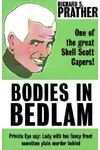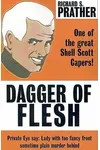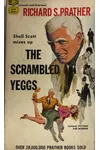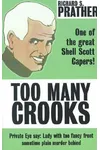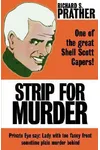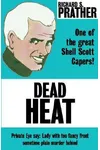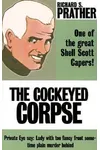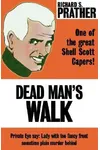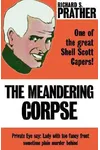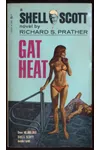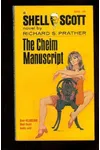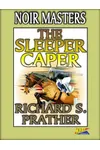Picture a sun-soaked California street, where a wisecracking private eye named Shell Scott dodges bullets and dames with equal flair—meet Richard S. Prather, the American mystery maestro who brought this world to life! Born in 1921, Prather spun hard-boiled tales with a humorous twist, earning a devoted following and the Private Eye Writers of America Lifetime Achievement Award. His Shell Scott series, blending gritty crime with playful banter, made him a standout in the 1950s and 60s mystery scene.
Prather’s journey from Merchant Marine to pulp fiction icon is as colorful as his novels. With over three dozen Shell Scott mysteries and a knack for keeping readers hooked, his work remains a delightful dive into classic detective fiction. Let’s explore the man, his stories, and why his legacy still packs a punch.
The Making of Richard S. Prather
Born on September 9, 1921, in Santa Ana, California, Richard Scott Prather grew up with a love for storytelling, dabbling in poetry and short stories as a child. After a year at Riverside Junior College, he joined the U.S. Merchant Marine during World War II, serving from 1942 to 1945. Post-war, he worked as a clerk at March Air Force Base, but the lure of pulp mysteries—think Raymond Chandler and Damon Runyon—proved too strong. In 1945, he married Tina Hager, an artist, and by 1949, he quit his day job to write full-time, kicking off a career that would define an era.
Richard S. Prather’s Unforgettable Stories
Prather’s breakout came in 1950 with Case of the Vanishing Beauty, introducing Shell Scott, a 6-foot-2 ex-Marine with a buzz cut, a bullet-scarred ear, and a penchant for trouble. Scott, based in Los Angeles, tackled cases with a mix of grit, charm, and humor, often entangled with femme fatales and quirky settings. The series, spanning over 40 titles, became a sensation, rivaling Sherlock Holmes in popularity during its peak.
Notable works include Strip for Murder (1955), where Scott goes undercover in a nudist colony—gun awkwardly in tow—and The Wailing Frail (1956), featuring a memorably bare-knuckled encounter with a nude client. Prather’s style leaned lighter than the grim hard-boiled tales of Mickey Spillane, blending swift violence, loopy humor, and vivid Southern California backdrops. He also wrote under pseudonyms like David Knight and Douglas Ring, producing non-series novels like The Peddler (1952), a gritty crime tale, and short stories for magazines like Manhunt.
His prolific output hit a snag in the 1970s due to a dispute with publisher Pocket Books, leading to a lawsuit in 1975. Prather stepped away, growing avocados in Fallbrook, California, before returning with The Amber Effect (1986) and Shellshock (1987). His final novel, The Death Gods, completed before his 2007 death, was published posthumously in 2011.
Why Richard S. Prather Matters
Prather’s Shell Scott series brought a fresh, fun voice to the hard-boiled genre, making mysteries accessible and entertaining. His playful plots and punchy dialogue influenced later detective fiction, while his Southern California settings captured a vibrant era. Selling over 40 million copies, his books resonated with readers craving escapism. The 1986 Lifetime Achievement Award from the Private Eye Writers of America cemented his impact, and his manuscripts, donated to the University of Wyoming, preserve his legacy for scholars and fans.
Prather’s work, though dated in spots, remains a time capsule of mid-20th-century pulp, offering a breezy escape into a world of tough guys and clever quips. His ability to balance danger with humor keeps Shell Scott a fan favorite.
- Born: September 9, 1921, Santa Ana, California
- Key Works: Case of the Vanishing Beauty, Strip for Murder, The Wailing Frail, The Death Gods
- Awards: Private Eye Writers of America Lifetime Achievement Award (1986)
- Died: February 14, 2007, Sedona, Arizona
Ready for a wild ride with Shell Scott? Snag Case of the Vanishing Beauty and dive into Richard S. Prather’s snappy, sunlit world of mystery!

